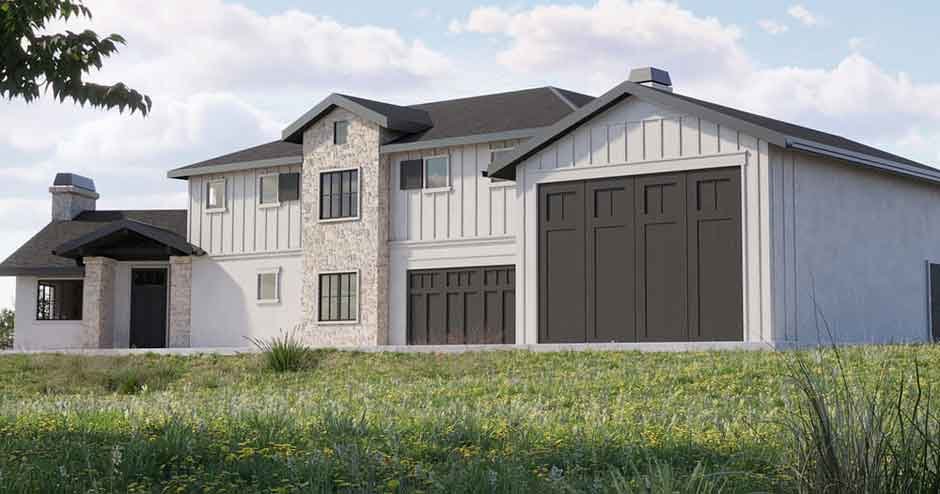Imagine standing before your dream home, admiring its grandeur and unique design. You can already envision the lush garden, the sleek lines of the architecture, and the interplay of light and shadow on its exterior. But how do you transform this vision into a tangible representation? This is where the power of 3D rendering comes into play. In this comprehensive guide, we’ll take you through the step-by-step process of how 3D rendering breathes life into your home exterior ideas, turning concepts into captivating visual realities. If you’re looking for a professional and reliable video rendering studio to help you create stunning 3D renderings of your home exterior, check out https://yousee.studio/.
- Visualizing the Concept: From Ideas to Blueprint Before the process of 3D rendering even begins, it’s essential to have a clear concept of your dream home’s exterior. This involves brainstorming ideas, gathering inspiration from architectural trends, and sketching rough outlines. Once you have a blueprint, it’s time to move on to the next step.
- Creating the 3D Model: Building the Digital Foundation The journey begins by translating your concept into a digital 3D model. This involves using specialized software like SketchUp, Revit, or Blender to build the virtual structure of your dream home. Every detail, from the placement of windows and doors to the architectural nuances, is meticulously crafted in this virtual space.
- Choosing Materials and Textures: Crafting Realistic Surfaces One of the keys to achieving a lifelike 3D render is the selection of materials and textures. This step involves choosing the right textures for different surfaces—whether it’s the warm embrace of wooden panels, the cool touch of stone, or the sleekness of glass. Advanced rendering software allows you to replicate real-world materials’ exact properties, enhancing your visual representation’s authenticity.
- Setting the Scene: Incorporating Lighting and Environment Lighting plays a pivotal role in the realism of a 3D render. In this step, you’ll work on setting up the lighting conditions to match the time of day you want to showcase. Whether it’s the morning sun’s soft glow, the sunset’s dramatic hues, or the subtle interplay of artificial lighting in the evening, getting the lighting right is crucial for bringing your exterior to life.
- Adding Context: Surroundings and Landscaping A home doesn’t exist in isolation—it’s part of a larger environment. To enhance the authenticity of your 3D render, consider the surroundings. Are there trees, a garden, a driveway, or a pool? Integrating these elements seamlessly into the 3D model adds depth and context, making the visual representation even more captivating.
- Fine-Tuning Details: Balancing Realism and Artistry With the foundation of your 3D model and its contextual elements in place, it’s time to focus on refining the details. This involves adjusting the colors, fine-tuning textures, and ensuring that every render aspect aligns with your initial vision. Striking the right balance between hyperrealism and artistic interpretation is vital to creating an engaging and visually appealing render.
In the next part of this guide, we’ll delve into the advanced stages of the 3D rendering process, exploring techniques to enhance realism, evoke emotions, and transform your home exterior ideas into captivating visual narratives. Stay tuned for an in-depth exploration of materiality, lighting, and composition that will take your 3D renders to the next level. Your dream home exterior is closer to reality than you think.
Elevating Realism and Emotion in 3D Rendering

In the previous section of this guide, we explored the initial steps of the 3D rendering process, from conceptualizing your dream home’s exterior to creating a digital 3D model. Now, let’s delve into the advanced stages that will elevate the realism and emotion in your 3D renders, transforming them into immersive visual experiences that showcase the full potential of your home exterior ideas.
- Mastering Materiality: The Art of Realistic Textures
The quality of textures in a 3D render can make or break its realism. To achieve lifelike surfaces, it’s crucial to understand the intricacies of different materials. Whether it’s the roughness of exposed brick, the smoothness of glass, or the shine of metallic elements, each material has unique properties that must be accurately replicated. Advanced rendering software allows you to incorporate intricate details, such as imperfections, scratches, and reflections, that contribute to a more convincing render.
- Captivating Lighting Techniques: Setting the Mood
Lighting is not only about accuracy but also a powerful storytelling tool. Beyond simulating natural and artificial light sources, you can use lighting to evoke specific moods and emotions in your 3D render. Experiment with techniques like chiaroscuro to create dramatic contrasts between light and shadow or incorporate backlit elements to infuse a sense of warmth and coziness. The interplay of light and shadow can evoke emotions and immerse viewers in the visual narrative of your home exterior.
- Crafting Dynamic Composition: Guiding the Viewer’s Eye
Composition plays a significant role in how viewers perceive your 3D render. Guiding their gaze to key elements can enhance the impact of your visual narrative. Techniques like the rule of thirds, leading lines, and framing can create dynamic compositions that draw attention to architectural details, landscaping, or focal points. A well-composed render showcases your design and guides the viewer’s eye to appreciate its aesthetic and functional aspects.
- Infusing Context and Storytelling: Evoking Emotion
A 3D render isn’t just a static image—it’s an opportunity to tell a story. Consider how your home exterior fits into its surroundings and how its inhabitants will experience it. Are people enjoying the garden, a family gathering on the patio, or a couple walking through the entrance? Infusing context and storytelling elements into your render can evoke emotions and make it relatable to your target audience, allowing them to envision themselves living in the space.
- Iterative Refinement: The Art of Perfection
The journey of creating a compelling 3D render involves iteration and refinement. Take the time to critically evaluate your render from different angles, experimenting with various camera positions and perspectives. Fine-tune the lighting, adjust textures, and reevaluate the composition to ensure every aspect aligns with your vision. Iterative refinement is where your 3D render evolves from a concept to a captivating visual representation that resonates with your audience.
As you’ve discovered in this guide, the process of 3D rendering is a blend of technical prowess and artistic expression. From building the foundation with a 3D model to mastering materiality, lighting, composition, and storytelling, each step transforms your home exterior ideas into breathtaking visual narratives. With the right tools, software, and creative approach, 3D rendering allows you to showcase the true potential of your architectural vision. Embrace the journey of turning your dreams into reality, pixel by pixel.
Showcasing and Sharing Your Masterpiece

In the previous sections of this guide, we explored the initial stages of 3D rendering and advanced techniques to enhance realism and emotion in your renders. Now, let’s dive into the final steps of the process—showcasing and sharing your 3D render masterpiece with the world.
- High-Quality Rendering Outputs: From Screen to Print
Once your 3D render is polished and refined, generating high-quality outputs is time. These outputs can be used for various purposes, from digital presentations to print materials. Rendering software allows you to create images with multiple resolutions, aspect ratios, and formats. Whether you’re building a digital portfolio, a presentation for clients, or promotional materials, ensure that your render maintains its visual integrity across different mediums.
- Virtual Tours and Walkthroughs: Immersive Experiences
Static images are captivating, but interactive experiences take your 3D render to a new level. Virtual tours and walkthroughs allow viewers to explore the exterior of your design from different angles and perspectives. They can virtually “walk” through the garden, patio, and entrance, giving them a sense of the space’s scale and layout. Incorporate user-friendly navigation tools to enhance the experience, making it feel as if the viewer is physically present in the environment.
- Integrating Augmented Reality (AR): Real-Time Visualization
Augmented Reality (AR) technology empowers you to bring your 3D render into the real world. With the help of AR applications, clients can use their smartphones or tablets to view your design in their surroundings. This technology enables them to assess how the exterior integrates with their existing environment and make more informed decisions. AR also bridges the gap between imagination and reality, making the design concept tangible.
- Building a Portfolio and Online Presence: Your 3D Render Showcase
Building an online portfolio is essential as a professional in the architectural or design field. A dedicated website or portfolio platform is an excellent way to showcase your 3D rendering skills. Create a visually appealing and user-friendly interface to display your projects, including home exteriors. Alongside the visuals, provide descriptions highlighting the design concepts, techniques, and stories behind each project. An online presence attracts potential clients and establishes your expertise in the industry.
- Collaboration and Feedback: Engaging Stakeholders
The journey of 3D rendering doesn’t have to be a solo endeavor. Collaboration and feedback play a vital role in refining your work. Engage with clients, architects, landscapers, and other stakeholders to gather insights and incorporate their input. Collaboration platforms and software allow you to share your renders, receive feedback, and make real-time adjustments. This iterative process ensures that the final render aligns with the vision and expectations of all parties involved.

As you’ve learned throughout this guide, 3D rendering is a multifaceted process that transforms your home exterior ideas into immersive visual experiences. From mastering the technical aspects to harnessing the power of storytelling and interaction, 3D rendering empowers you to bridge the gap between imagination and reality. By following these step-by-step guidelines and embracing creativity, you can bring your architectural visions to life with unparalleled precision and artistry.












